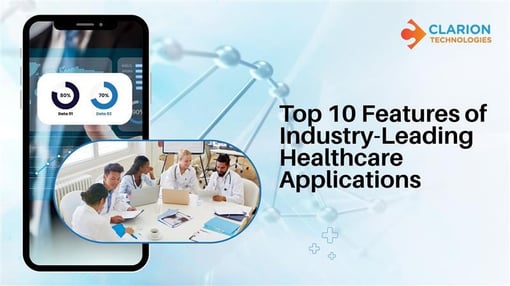Is your healthcare organization looking to build a feature-rich application? Are you a healthcare solution provider seeking dedicated assistance to introduce engaging functionalities within your existing healthcare software? Do you, as a medical business leader, keep contemplating about modernizing your healthcare application with the most sought-after features? All this is possible when you take the right aspects and user preferences into consideration.
But how do you know which features excite users and keep them engaged over time? Not to worry, this blog post will resolve all your queries once and for all. It will take you through a curated list of features integrated by top-tier healthcare applications. But first, let’s understand what the current scenario of healthcare software development looks like.
Healthcare Software Development: The New User-First Technology Era
Healthcare software has been consistently transforming how people utilize medical services, insurance workflows, caregiving capabilities, payment facilities, pharmacy systems, and health dashboards. Thanks to smartphones, proving to be a valuable asset in connecting medical professionals, patients, and healthcare providers.
Healthcare application development presents endless possibilities to deliver lasting user experiences while ensuring high ROI. Individuals heavily rely on applications for their healthcare requirements and how they seek medical assistance.
Independent research states to have 350K+ healthcare applications across global app stores. Another report by Statista states that currently more than 96K+ medical and healthcare apps exist on Google Play Store and Apple App Store combined. As such, this market is about to reach a whopping $243.57 billion by 2030 during the forecast period 2022 to 2030.
This rapidly growing market unleashes a technology-powered user-centric healthcare ecosystem. The environment is driven by advanced tools, services, approaches, and modern technologies, such as:
-
Agentic AI & Generative AI algorithms
-
Machine learning & natural language engines
-
Data analytics & business intelligence (BI)
With these aspects taking the center stage, healthcare professionals are able to incorporate hyper-personalized features and functionalities in medical applications and software. It’s a way toward accelerating digital transformation for business success and profitability.
Advanced Features of Healthcare Applications You Can’t Miss
There are various features that medical facilities and solutions providers offer through their healthcare software and applications. Let’s look at the most significant features and functionalities integrated to give you a better idea.
#1 AI-Based Support
The first feature that most healthcare organizations are integrating within their applications is user support backed by AI. This includes conversational functionalities led by healthcare AI chatbots, NLP-based virtual assistants. The feature is also assisted by pre-trained AI agents that are trained on historical data for faster response generation.
Here’s an image that better explains what AI-based healthcare support assistants actually do.
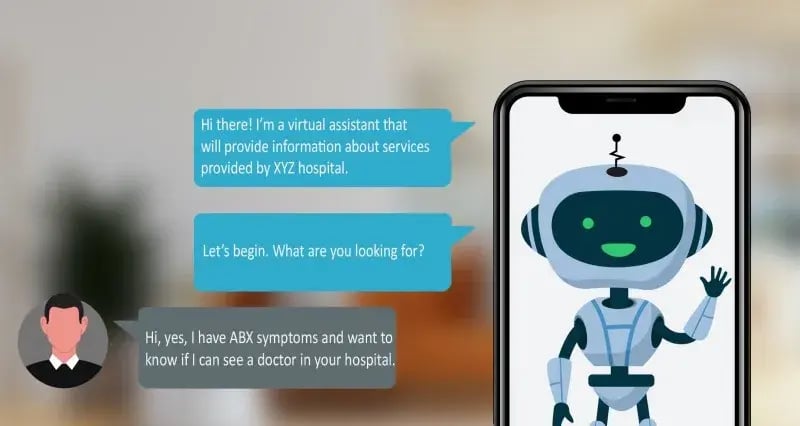
#2 Medication Tracker
This feature allows patients to stay ahead of their medication cycle and can be implemented across various platforms and devices. It includes easy-to-set-up pill alerts and notifications to ensure completion of the suggested dose within the stipulated timeline. It can be implemented in wearable devices. Moreover, this feature can also generate reports as per the desired duration.
Here’s an example of the Medisafe app that offers such a feature, which is available even on Apple watches.
![]()

#3 Physician Consultation
Another feature that many healthcare solutions providers have already invested in is remote and virtual consultation with physicians, nutritionists, caregivers, and health coaches. It supports phone as well as video call options for diverse medical needs in telemedicine/telehealth applications. It can be helpful for patients with critical conditions and those who need primary care.
The below image shows a similar feature in the Teladoc application that allows patients to navigate across various care options and get the required help.
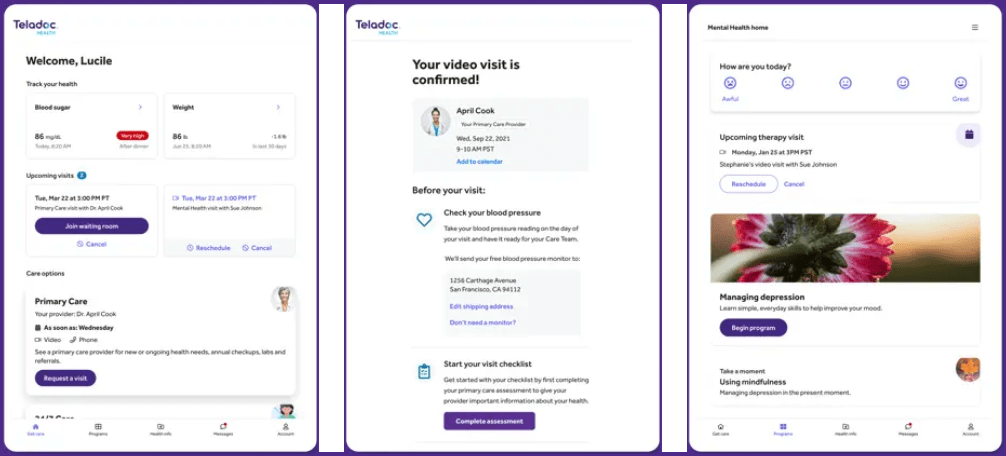
#4 Mental Health Screening
Leading healthcare apps for patients with this feature ensure error-free mental health assessment and treatment. This kind of feature can accelerate mental health screening for employees, employers, and physicians. It offers customizable options for administrative tasks – be it caregivers, groups, or an individual patient.
For better understanding, here’s an example of a healthcare application showcasing a similar feature. Its flawless UI/UX design decreases the level of stress in users, thereby enabling accurate assessments.
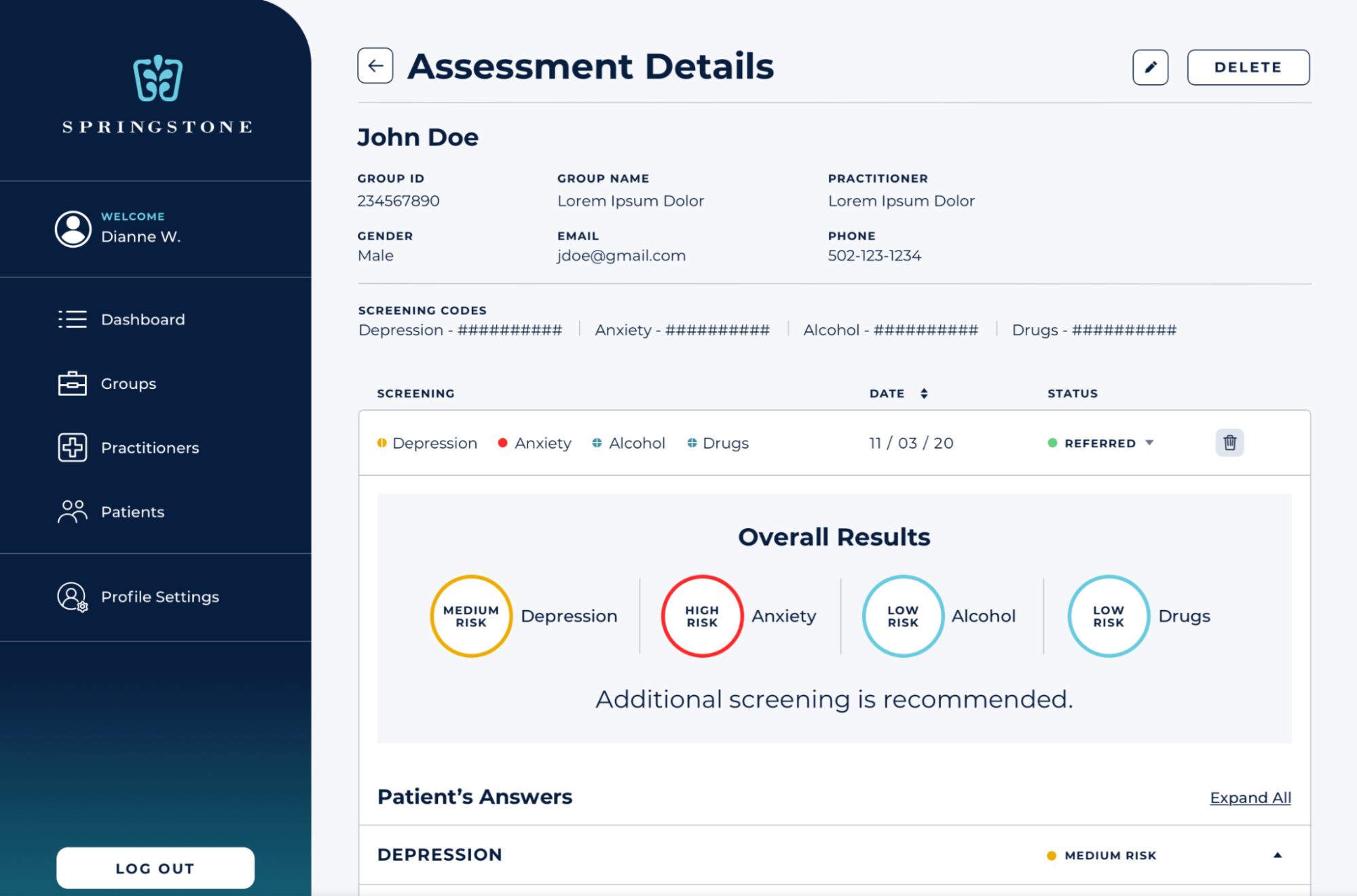
#5 Health Vitals Tracker
Keeping a tab on patient vitals has become a critical aspect of many healthcare application features. This includes tracking body temperature, oxygen saturation, blood sugar level, heart rate, and respiration rate. The feature aims to log data effectively so as to help physicians gain more visibility into patient health and set their treatment trajectory accordingly.
Here’s an image representing the MySugr app that effectively tracks sugar levels in patients to treat diabetes with utmost precision.
![]()
#6 EMR/EHR Management
EMR and EHR management feature allows patients to access all medical information, health records, and health-related metrics in one centralized location. It avoids the risks of data loss, streamlines physician-patient communication, and fast-tracks diagnosis and treatment.
MyChart offers a particular feature where patients can view all their medical documents along with their past treatment history.
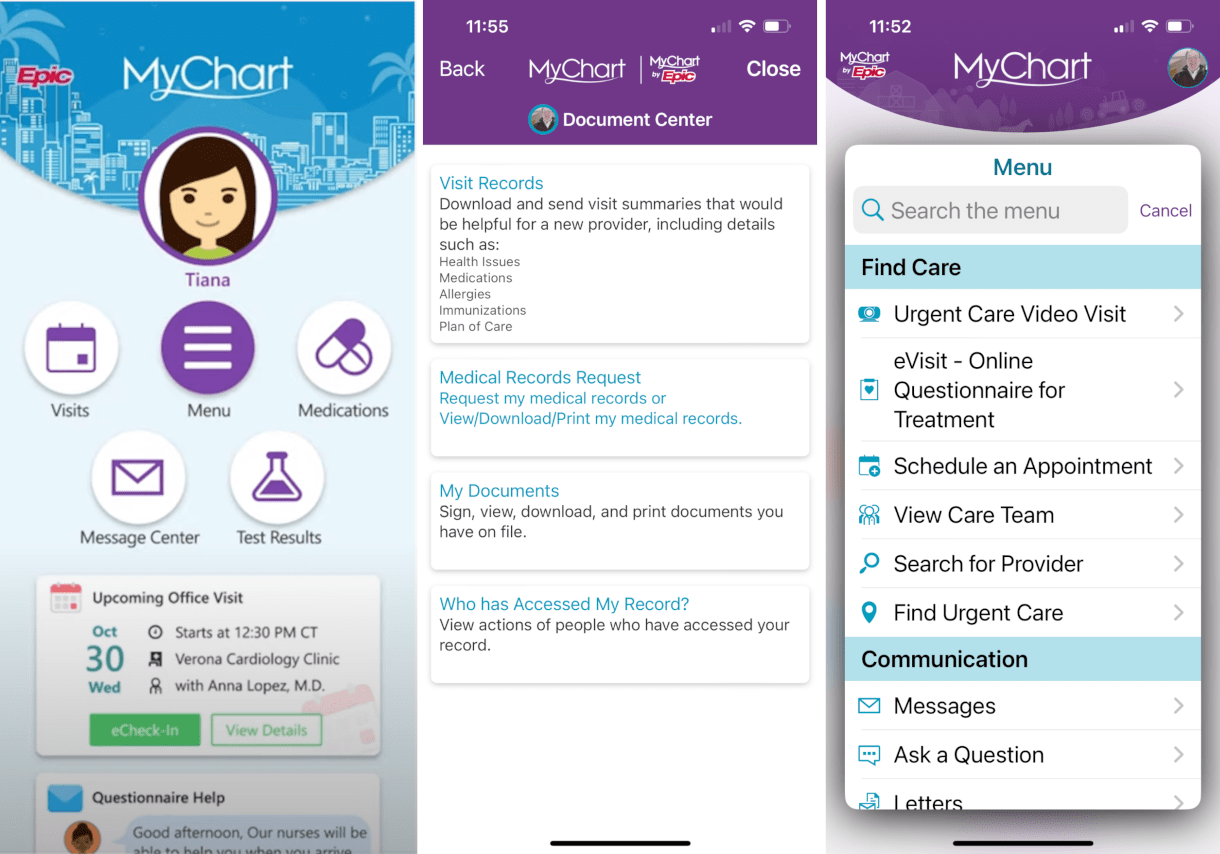
#7 Integrated Payment
Medical billing can prove to be a time-consuming process. However, with the help of the integrated payment feature, this process can become easier than ever before. Patients can get billing information, invoices, insurance details, and payment modes at their fingertips. This feature reduces administrative workloads and enables transparent billing for patients.
Here’s an example of a healthcare application with a similar feature to give you a better idea of how this functionality looks exactly.
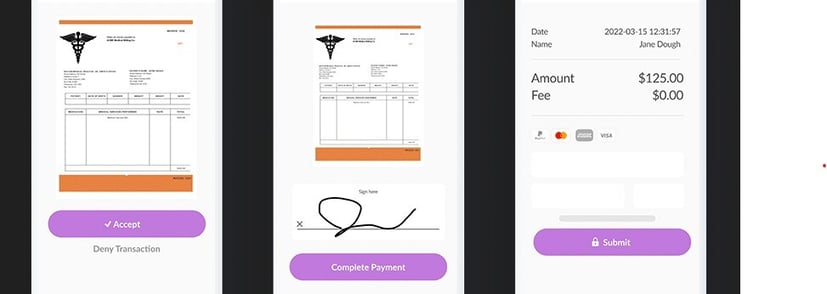
#8 Multilingual/Localization Support
Multi-language feature in healthcare applications proves to be a game-changer for global medical facilities and healthcare solutions providers. On the flip side, it enhances patient trust and understanding. The feature can further be advanced to support localization requirements, enable instant translation, avoid cultural barriers, and improve care delivery.
Have a look at the below image to get an idea about how this feature can look in a healthcare application.
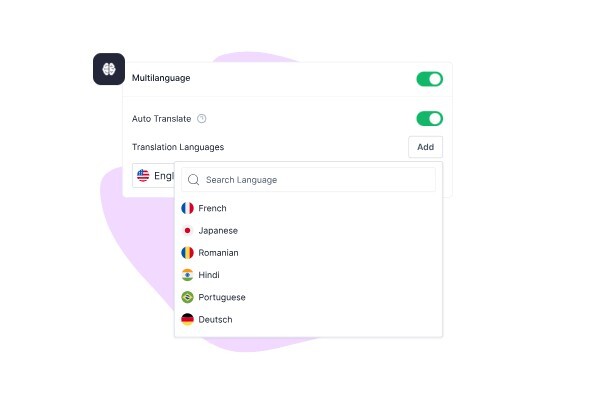
#9 Speech-to-Text Support
This feature is best for taking automated notes from a physician’s input quickly, effectively, and without any hassle. It ensures no information is assumed or misunderstood by patients while interacting with the consulting physician. It avoids the risks to patient health and provides accurate care for the respective patient condition.
Here’s what this feature/functionality can bring to the table.
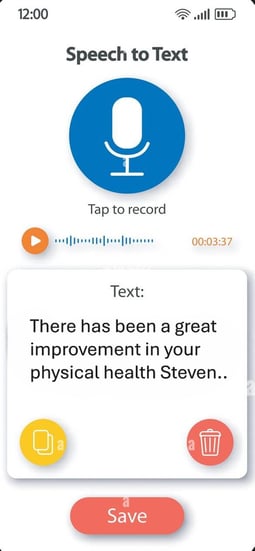
#10 Community Support
Renowned healthcare applications are now integrating a community-based feature to offer emotional support, reduce stress, and deliver sophisticated care. The feature connects patients with identical health issues to share stories about their recovery and ask questions to solve triggering assumptions. It can introduce dedicated forums and articles to boost education.
To get a more clear idea, check out the below image with a similar use case.
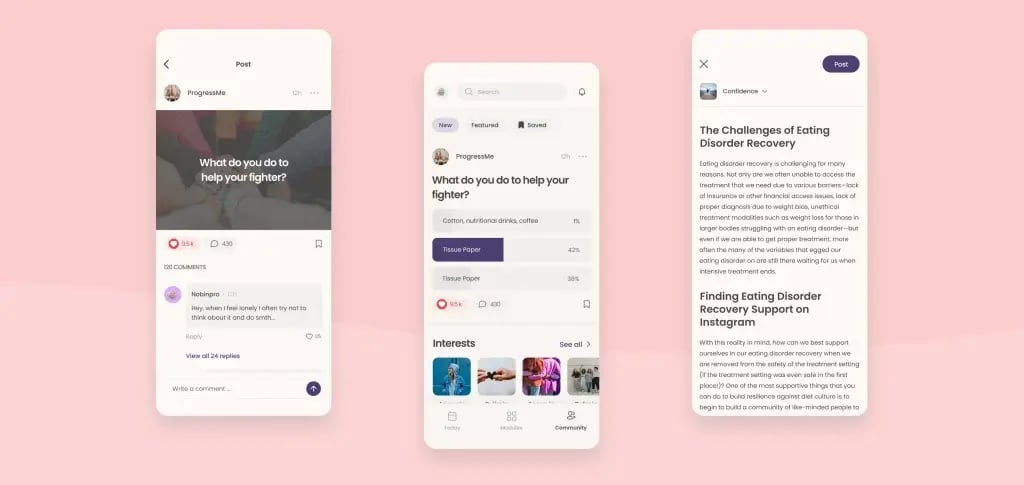
What Makes an Exceptional Healthcare Application?
Indeed, the aforementioned features surely make healthcare applications engaging and interactive. However, there are a few proven techniques to be taken into consideration for exceeding business goals and delivering exceptional healthcare applications.
Creating User-Centric Designs
Whenever you develop and launch a new feature, ensure it keeps users at the forefront. You need to focus on introducing patient-centric designs and interfaces that perfectly resonate with them, address key pain points, and are easy to use.
Researchers believe every $1 invested in user experience (UX) gives an ROI of about $100. On the other hand, focusing on UX issues helped Recora – a virtual cardiac rehabilitation provider, reduce the frequency of support queries by 142%. These statistics truly explain the importance of UX and a user-centric approach and how they create a win-win for patients as well as healthcare solutions providers.
Enabling Seamless Navigation
Another best practice to be noted is uninterrupted navigation while using a particular feature or functionality. It’s really important to ensure if users can use app features without any potential interventions and disturbances.
Prioritizing Robust Security
The features you launch should be driven by stringent regulations and healthcare security standards, including HIPAA, GDPR, SOC 2, HITECH, and NIST CSF. They should be end-to-end encrypted and prevented from data leakages, malicious activities, unauthorized access, and other compliance issues.
Addressing Interoperability Needs
With great applications come a more critical responsibility of health information exchange while maintaining confidentiality. As such, you need to ensure solid interoperability for the features you introduce. These features should operate smoothly across varied OSs, platforms, devices, and external tools.
Collaborating with A-Players
Last but the most important consideration is partnering with a trusted healthcare software development company like Clarion Technologies. This will help you harness the power of vEmployee delivery model and engage with A-players who act as an extension of your internal team. You will be able to onboard top 1% experts with hands-on expertise in medical app development, realistic features integration, and technology roadmap creation.
Final Thought
With 2026 just around the corner, the medical industry needs to rethink how it approaches healthcare application development. What’s more important is to roll out features that meet user preferences and requirements head-on. Healthcare solutions providers and medical facilities need to develop applications with intuitive features and functionalities to dominate the industry.
Ready to build healthcare software and applications backed by modern-day aspects? Reach out to experts at Clarion to get started right away. Share your requirements and we will be more than happy to help you achieve your business goals, improve patient experience, and enable impactful results.
Author




